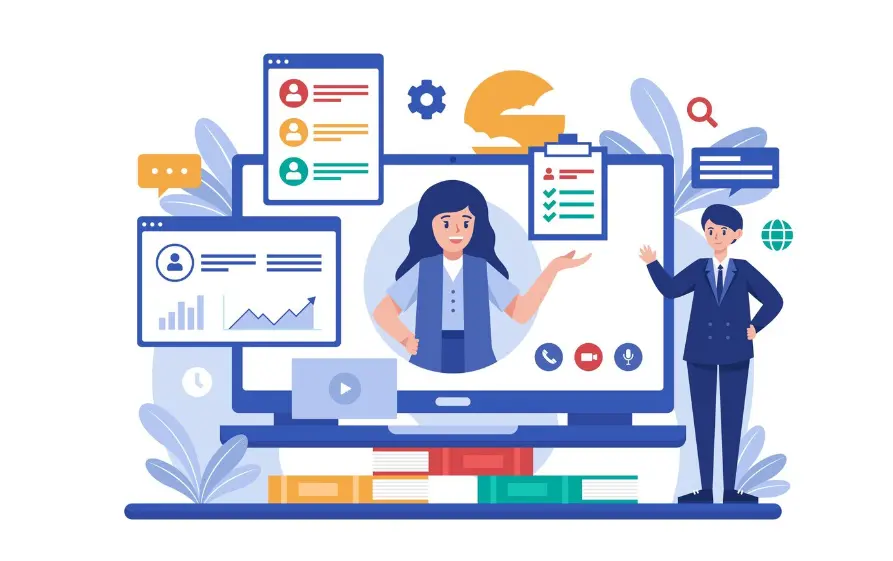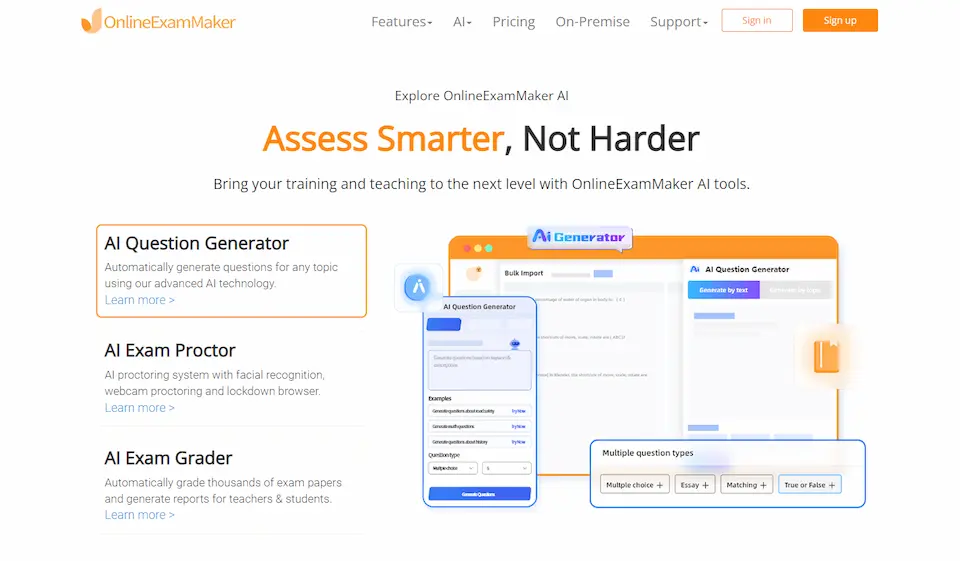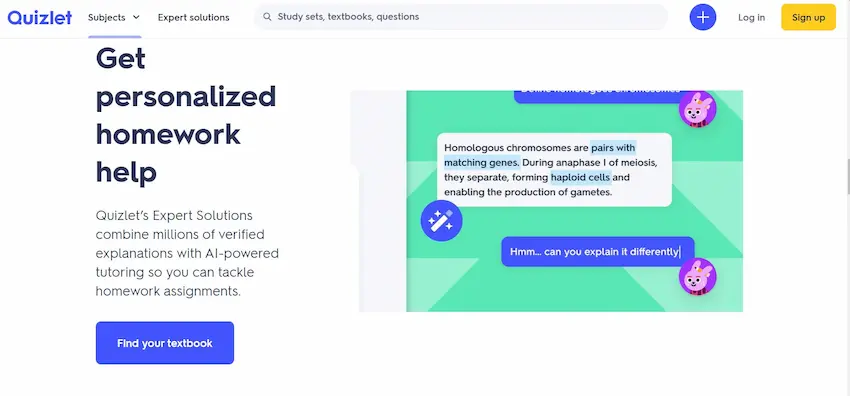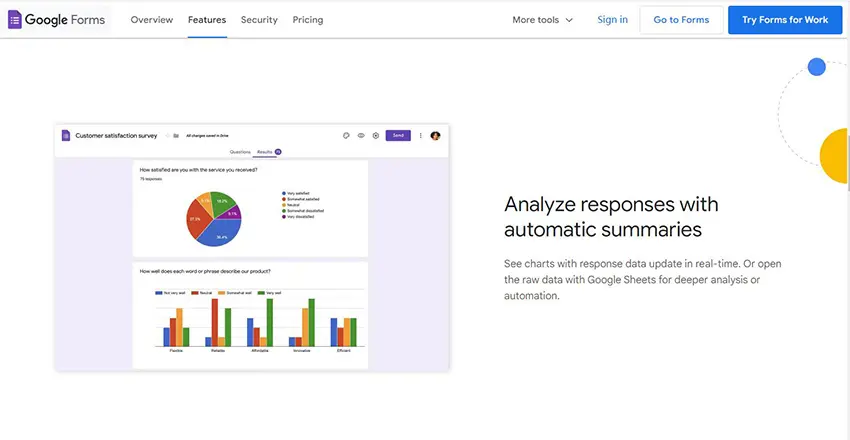In the field of education, microlearning has led to noticeable changes in the way we learn and remember information.This trend features “mini” content, allowing students to engage with the subject in concentrated, short bursts. This is perfect for the busy schedules of modern individuals.
However, these are only some of what microlearning does. If you wanna learn more about it, keep reading!
- What Is Microlearning?
- Types of Microlearning
- Why Are Online Assessments Important for Microlearning?
- 3 Best Online Assessment Tools for Online Microlearning
- Microlearning FAQ
What Is Microlearning?
Microlearning is the most contemporary methodology in pedagogy, where challenging ideas are split into manageable chunks or small bits.
Think of learning in short bursts, whereby information is passed in not-thick, digestible, targeted blobs. This would help students whose attention spans are usually short. Whether you have five minutes or an hour to spare, microlearning will help you quickly gain some knowledge rather than sit for long, tedious classes.
Remember, microlearning doesn’t just mean learning for a short amount of time. It’s about getting the right information when you need it, often customized to meet specific learning goals or needs.
Especially in today’s digital world, where students are used to getting information in small pieces, microlearning is very effective, like doing a quick search on the internet or seeing a social media update. It is great because it’s flexible – you can use it whenever you have a few free minutes, like during your commute or coffee break.
Microlearning improves long-term memory retention using repetition and reinforcement. It is commonly used in corporate training to allow staff to learn new skills and information without missing work.
It makes learning more convenient, accessible, and engaging for today’s learners, transforming traditional educational experiences into a more dynamic and personalized approach. It is an effective education revolution that fits well into modern lifestyles.

Types of Microlearning
Microlearning is versatile and comes in various formats to meet different learning objectives and individual preferences.
Video
One of the most popular forms of microlearning is video-based. These videos deliver important information in a concise and focused manner, using animations, infographics, and live events to make complex ideas easier to understand.
Interactive Modules
Another popular format is interactive modules that include games, simulations, and quizzes to help students practice and engage with the material.
Text-Based
Equally popular is the text-based microlearning that includes infographics, blogs, and short essays. It gives access to the most critical information quickly and is especially useful for those learners who are readers. Adopted by mobile apps, microlearning includes features like daily tips, flashcards, and even push alerts that dole material out in easily digestible parts. In this format, users can quickly integrate education into their everyday activities and learn on the go.
Social Microlearning
Social microlearning involves the addition of a social dimension to the learning process; in this respect, students can share ideas through discussion boards or other collaborative platforms. It encourages the exchange of ideas and information, accordingly increasing and diversifying the process of education.
Audio
Finally, audio-based microlearning—by way of podcasts or concise audio clips—enables learning while multitasking, such as driving, working out, or cooking. Each form of microlearning has its advantages, which ensure that learning is engaging, interactive, and perfectly aligned with the needs of the modern learner.
Why Are Online Assessments Important for Microlearning?

It is critical to the success of microlearning because it forges a very important link between learning and actual application. These tests may allow students to independently check the understanding and retention of the subject matter in this high-speed environment of microlearning.
Unlike traditional exams that are lengthy and time-consuming, online tests for microlearning are short and to the point, tailored to keep up with the bite-sized format of the content. They are essential in helping learners retain knowledge and help them remember what has been learned. Had it not been for such evaluation, the quick delivery of information in microlearning could lead to missing or losing major ideas.
Their instantaneous nature adds another level of benefit to online tests. Learners receive immediate feedback that is very critical to understanding their strengths and areas in need of development. Through this fast-paced feedback mechanism, the process of learning is changed from a passive to an active one, with the student finding the process lively and motivating. Students feel a sense of progress and accomplishment, which is very basic in sustaining momentum in their academic endeavors.
In keeping with the efficiency and flexibility that microlearning promotes, tailoring online tests is possible. Such incorporation into teaching methods makes it possible for educators or an organization to create a dynamic and responsive learning environment that guarantees knowledge retention and readiness for application in real life.
3 Best Online Assessment Tools for Online Microlearning
Online assessment tools that work efficiently to trace progress, provide feedback, and ensure learning objectives are met become more in demand. An important component of online training includes assessments, which provide both the instructor and learner with methods to assess effectiveness. With so many options available, the selection of the best tool can be confusing. Here are three leading online assessment tools for online training, known for their usability, functionality, and ability to enhance the learning process, that can help you make your way through this landscape:
OnlineExamMaker: Full-range Assessment in Response to Diverse Needs

OnlineExamMaker is an all-powerful tool for online training, serving as an independent online assessment solution that can be flexibly set to suit several test objectives. With the density of this feature set, teachers and trainers can generate, manage, and analyze tests with much ease. No matter what kind of certification exam—either professional or educational courseware—the business training OnlineExamMaker equips you with the tools necessary to easily and effectively create tests tailored to your particular objectives.
One of the most outstanding features of OnlineExamMaker is its question variety. The supported types of questions within this platform range from multiple-choice to true/false, essay, and even multimedia questions with images, music, and video. With such a variety, you will easily design tests that can suit different learning styles or involve students in new ways besides knowledge testing. Questions are considered multimedia and can evaluate the understanding of complex situations. In this way, the evaluation becomes more interactive and lifelike.
The other category in which OnlineExamMaker stands out is in its secure and fair examination environment. It has advanced features such as time limits and IP address restrictions to prevent the possibility of cheating, with randomization of questions and their options. Besides these, OnlineExamMaker also hosts proctoring features that will help in the examination process in real-time, completely safeguarding the integrity of the assessment. This is specifically of importance in high-stakes tests, where test security needs to be given priority.
Furthermore, OnlineExamMaker can integrate with almost any current training infrastructure because it is developed to support a range of integrations with various Learning Management Systems. Interoperability allows for a seamless learning process by providing full integration of your assessments with other training materials. OnlineExamMaker can do it all: from measuring student progress through a self-paced course to assessing knowledge in real-time during a live training session.
Create Your Next Quiz/Exam with OnlineExamMaker
Quizlet: Make Learning Easy with Flashcards and Games

One of the most popular brands associated with online learning is Quizlet; simply because it is an innovative form of evaluation technique. Once designed as a flashcard maker, now it has evolved into a full-fledged evaluation tool that offers several learning avenues like tests, games, and quizzes. The reason Quizlet is so popular for virtual instruction is that it allows the creation of dynamic, engaging learning experiences. The site’s flashcards are flexible and could be tailored to suit any training session or subject. Be it medical terminology, studying a new language, or getting ready for professional certification, Quizlet enables you to create customized sets of flashcards or to access other pre-made ones that would suit you just fine for your purpose at hand.
One of the unique things about Quizlet is that it has a “Learn” mode that changes based on how well users do. The tool ensures you’re always challenged by increasing the level of difficulty progressively as you continue answering the questions. It retakes any question you get wrong until you have grasped the content. This adaptive learning methodology makes Quizlet an awesome tool for long-term retention and information reinforcement. You can generate randomized tests from the flashcards in the platform’s “Test” mode, which provides a traditional form of assessment that comes with a modern twist.
Another characteristic that makes Quizlet one of the best options for instruction online is its gamification components. Games such as “Match” and “Gravity” make learning fun and competitive by challenging students to better their performance. For younger learners or those who have become bored with traditional assessments, these activities are very useful. Such interactive components let Quizlet easily retain the interest and motivation of students, which helps them absorb and retain information.
Google Forms: The Ultimate Tool for Customizable Assessments

Google Forms has been considered one of the best online tools for tests due to the great flexibility and user-friendliness that it allows. With Google Forms, a tool from the Google Workspace suite, teachers easily create personalized tests that are easy to set up and grade. Usability and perfect integration with other Google resources make the platform a number-one choice for many teachers and trainers. Create surveys, feedback forms, facts, or quizzes on any topic or training course with Google Forms. For creating a variety of sorts of assessment forms, this box supports all types of questions: multiple choice, short answer, linear scale, and more.
One of the main advantages of Google Forms is that it allows quick feedback and grading. Students can also view their scores and any teacher feedback once they complete a quiz. Immediate feedback, as in the case of online training, helps the learners see where they lack competence so they can improve accordingly. Ease of grading of checkboxes and multiple choice items is very timely when using Google Forms since it is automatically set to grade, and it easily saves the teacher’s time, a feature that ensures all grading is consistent.
Finally, Google Forms are free, thus they fit in the budget of a business irrespective of their size. Whether you are a big corporation that needs to conduct long training programs or a small one aiming to train its staff, Google Forms gives you an affordable solution for creating and managing online exams.
Conclusion
One of the most critical success factors of any online training program is choosing the right online assessment tool. The tools you opt for must not only measure knowledge and progress but engage and motivate learners as well. What puts OnlineExamMaker, Quizlet, and Google Forms at the forefront of many online assessment tools on the market is their special features. Where OnlineExamMaker excels with its comprehensive, secure, and versatile assessment environment, Quizlet, on the other hand, does so by being more engagingly interactive. It gamifies reviews, turning them into fun and competitive activities. Already with Google Forms, versatility, and user-friendliness form a very strong base for creating effective and engaging customized assessments.
But securing the best all-around use software for your online assessment, you have to use OnlineExamMaker as it offers not just security but all the other features you need, may it be engaging, fun, or formal, all of it can be done well by OnlineExamMaker. So no matter the target that you are focusing on, OnlineExamMaker is the perfect assessment tool for your needs.
Microlearning FAQ
What is microlearning?
Microlearning is an educational strategy that delivers content in small, manageable chunks, typically focusing on a single learning objective or topic. These bite-sized lessons can be consumed quickly, often taking just a few minutes.
How does microlearning differ from traditional learning?
Traditional learning often involves long-form content, such as lectures or textbooks, whereas microlearning breaks information into smaller, focused segments. Microlearning is designed to be quick, accessible, and often delivered via digital platforms, making it ideal for busy learners.
Who benefits most from microlearning?
Microlearning is ideal for professionals needing to update skills, busy individuals with limited time, and learners who prefer quick, focused sessions. It’s also effective for reinforcing knowledge and skills over time.
How is microlearning assessed?
Assessment in microlearning often involves quizzes, interactive activities, or immediate feedback mechanisms to ensure learners understand the content. These assessments are typically brief and focused on the key points of the microlearning session.
What is the best online quiz software for microlearning?
OnlineExamMaker is the best tool for online exams, you can make advanced online exams with AI proctoring, signup form, and rich media. You can also try free quiz making software, like Google Forms, Microsoft Forms.
Can microlearning replace traditional learning methods?
Microlearning is best used as a complement to traditional learning, not a replacement. It works well for reinforcing learning, providing updates, or offering quick refreshers but is less suited for comprehensive, in-depth education.
How do you create effective microlearning content?
To create effective microlearning content, focus on a single learning objective, keep content concise, use engaging multimedia, and ensure the content is easily accessible. You can create training courses or assessments using AI. For example, OnlineExamMaker AI Question Generator allows trainers create quiz questions or courseware with AI for any topic.